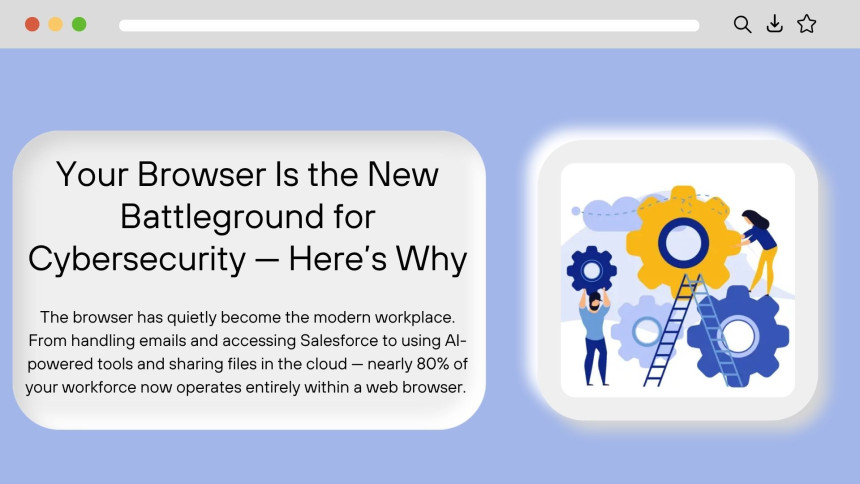
80% of Your Workforce Lives in a Browser — Here’s Why That’s a Security Risk
The browser has quietly become the modern workplace. From handling emails and accessing Salesforce to using AI-powered tools and sharing files in the cloud — nearly 80% of your workforce now operates entirely within a web browser.
It’s convenient. It’s fast.
But it’s also one of the most underestimated security risks facing enterprises today.
The Hidden Dangers Behind Every Tab
Browsers are the new endpoints — and they’re under constant attack. Phishing pages that look identical to real login screens, malicious extensions that exfiltrate data, and poisoned links in collaboration apps have all become daily realities.
Even worse, attackers exploit the very habits that make browsers so central to productivity.
Employees click without thinking. AI-driven assistants auto-complete sensitive prompts. And unmonitored sessions blur the lines between corporate and personal data.
Traditional endpoint security tools can’t see what happens inside these browser sessions, leaving massive visibility gaps and uncontrolled data exposure.
Why “Trust but Verify” Is No Longer Enough
Zero Trust has become the foundation of modern cybersecurity — but in the browser era, it must evolve. The challenge isn’t just verifying identities; it’s managing what users do once they’re verified.
Organizations need granular, session-level control, end-to-end encryption, and continuous validation for every browser interaction — whether the user is in the office or halfway across the world.
That’s where browser-native security platforms like Surf Security are changing the game.
Their Zero Trust Access model and centralized control give enterprises real-time visibility into browser activity while ensuring sensitive data stays protected through end-to-end encryption.
Instead of relying on the device, Surf Security secures the browser itself — turning it into a controlled workspace where policies are enforced dynamically and every action is verified.
It’s the kind of proactive security that transforms the browser from your weakest link into one of your most secure assets.
The Other Half of the Battle: Securing Communication
Even with hardened access controls, the content flowing through browsers remains a major attack vector.
Phishing links, weaponized attachments, and social engineering campaigns still account for the majority of breaches — often delivered through email, cloud apps, or chat tools.
That’s where solutions like Perception Point step in.
By integrating advanced threat detection across email, cloud collaboration apps, and web access, they help organizations detect and neutralize malicious content before it ever reaches an employee’s screen.
Their AI-driven prevention engine identifies phishing attempts, malware, zero-days, and account takeovers in real time — even when attackers use evasion techniques or exploit legitimate platforms like Slack, Salesforce, or AWS S3.
Together, Surf Security and Perception Point create a two-layer defense:
- Surf Security locks down how users access the web.
- Perception Point secures what they encounter once they’re there.
It’s an integrated strategy that extends Zero Trust principles from authentication all the way through to communication and collaboration.
A Browser-Centric World Demands Browser-Centric Security
The shift to cloud apps, hybrid work, and generative AI isn’t slowing down — and neither are attackers.
As employees spend more time in browsers, the attack surface expands exponentially.
Protecting your enterprise now means securing the browser, monitoring its content, and governing every interaction that happens inside it.
The combination of Surf Security’s Zero Trust Access and Perception Point’s AI-driven content protection offers a modern blueprint for doing exactly that — closing the visibility gap and defending the digital workspace where your people actually live.
Because when 80% of your business runs in a browser, browser security isn’t optional — it’s mission critical.
« Back to News & Media


